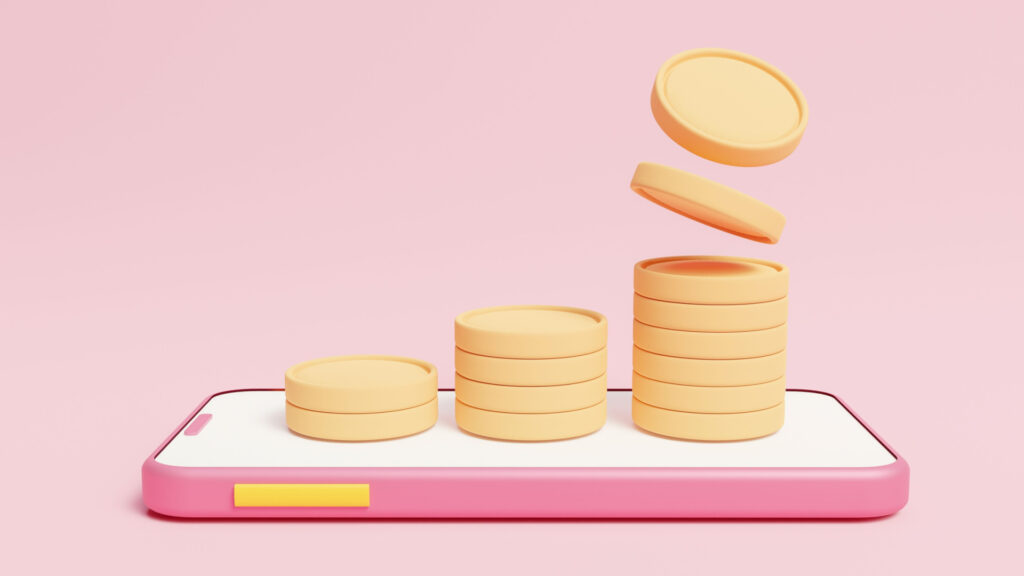Yield farming is a way of earning money by depositing a certain amount of cryptocurrency into a special pool. Apart from you, other users contribute their tokens to the pool, and the combined funds get used to implementing smart contracts. It can be as simple as saving funds or issuing credits in stablecoins at a certain interest rate.
The yield farming definition refers to passive income: users earn money by providing their cryptocurrencies for a process. You don’t mine crypto, you don’t buy huge capacities, and you don’t pay electricity bills. You must invest in a blockchain-based token once and then provide it to the pool. After that, token farms start to generate profits for you. Nevertheless, be careful of high stakes: aggressive returns carry a high probability of losing money. It is better to choose quieter options: for example, on exchanges, you can find crypto farms with yields from 2% that get compared with the key rates of the world’s leading governments. Nevertheless, yield farming means investing money with awareness of all the risks that await you. A risk event can still occur even if the yield is not higher than a bank deposit.
So how does yield farming work?
Cryptocurrency farming is a bit like a savings account: you deposit money, the bank accepts it, then collects money from several depositors and gives it out as a loan. That’s what most banking institutions you know do to make money. Only in the case of crypto farming do you know in advance that your tokens will be given to someone as a loan. You leave them in the pool for a certain period, and later they can also be used as collateral or the basis for liquidity pools. The value of the currency left in the pool will change in the same way as its rate on the stock exchange. But you will not be able to withdraw your savings — if they are “blocked” in the pool, you have no right to dispose of them.
Crypto yield farming involves the user’s participation in a liquidity pool. This mechanism is sometimes called liquidity mining. The pool necessarily has a smart contract — a special agreement activated when all the parties meet the specified conditions. The terms are entered into it independently. You, as an investor, contribute assets to the pool: either you choose their volume yourself, or you connect a wallet to the pool, which automatically supplies funds to it. Therefore, because of this, you give up the opportunity to sell the cryptocurrency on the market. This mechanism is also called stacking.
The smart contract is often set up for credit, which explains how investors in yield farming pools get such a crazy rate of return. Loans get taken by users or companies who have not been given loans from more traditional banks or crowdfunding platforms. It may mean that the risk of losing money is too great. Consequently, some farms try to minimise the potential loss by setting up a repayment process: you can get what you earn at regular intervals, not after the person has paid off the loan. However, such pools also often set so-called “yield farming rates” — small commissions for receiving payouts.
The pros and cons of yield farming

What are the current advantages and disadvantages of stablecoin yield farming?
The Pros
- It’s available. You can install an investment app on your computer or smartphone and track the movement of funds in real-time. The interfaces are intuitive, and most services offer a handy guide to their opportunities. Fast BNB and other ecosystems have one, for example.
- It’s simple. To start staking, an investor just needs to buy a cryptocurrency and “load” it into a pool engaged in DeFi yield farming. The entry point is very low, so almost any user can try farming.
The Cons
- The benefits are most frequently short-term. The market is unstable, and we can’t predict exactly what rate Polkadot or Cardano will have tomorrow. Consequently, profitability is highly volatile, and the benefit is short-term. There are few profitable strategies, and new and exciting ways of investing in staking only work at first.
- Gas prices. No, not regular gas. Gas is the coin you pay with for transactions on the Ethereum network. And it’s certainly not free. So you may find yourself in a situation where you have to pay more for gas than you potentially get after putting cryptocurrency into the pool.
- High risks. They do exist, and they scare many investors. Nevertheless, the farming methodology is still considered quite profitable. Still, not all experts agree with this.
The risks of yield farming
Farming has quite a few risks.
First, there is the risk of irreparable loss. It is also called impermanent. So, what is an impermanent loss in yield farming? Well, actually, it’s simple: if the value of a particular coin in a pool drops, you might find that your investment starts to melt away. Profits can sometimes make up for losses, but that doesn’t happen every time. Remember that liquidity gets added to the pool in pairs of equivalent value. Then all the coins within the pool move from side to side. That compensates for the fall in the value of one of the tokens.
Second, there is the risk of a smart contract. It means that an error in a smart contract, usually created using Solana, can lead to a dramatic drop in the value of an asset, literally bringing it to zero. Problems in contract code always become loopholes for fraudsters, and such errors can be fatal in large pools. That’s why users came up with the independent audit of smart contracts. It is available on any fairly popular platform, be it Binance smart chain (BSC) or Curve (Polygon).
Third, you may face liquidity risk. Suppose you withdraw your funds from the pool to one of the blockchain platforms. For example, you want to sell your Bitcoin at market value. But investors are not willing to buy that much Bitcoin, and you cannot quickly sell it on the market. That is illiquidity: you cannot sell the asset quickly.
Fourth, there is the usual injustice. Pool founders can control them by distributing rewards. If you don’t invest heavily, you’re unlikely to get the profits you were promised. There are already examples of such organisations: the Sushiswap pool collapsed after its founder (characteristically, a sushi chef by profession) Nomi withdrew all liquidity from it. The value of pool tokens with the ticker symbol SUSHI instantly fell by 73%.
Fifth, of course, we cannot forget the regular scammers. The application for farming can be created by literally anyone — the cost of work of a programmer who knows about blockchain is not prohibitively high, and you can find those who will help develop the service on any aggregator. So, studying any of those applications you like is better. Also, check reviews, look for those who have already farmed there, and dive into the history of the service. Be careful: the first farmers in new applications always get a higher yield, so you must resist the temptation to earn more money than everyone else.
Sixth, some platforms offer their own tokens, which are rarely backed by anything. In simple terms, this means that the asset’s value can fall and rise at least 100 times a day. So if the pool pays rewards in its tokens, it’s better to put them on the market and sell them immediately. Nevertheless, you may not have time to do that because the exchange rate changes in seconds.
Types of yield farming

So, what’s on the list of the most popular types of farming?
- Compound yield farming
Compound yield farming is an increase in the value of an investment because of the addition of additional amounts (usually interest received by the investor). Thanks to this, the user’s profit increases: you reinvest the profits, thus increasing the amount on which the interest accrues. The same mechanism works in conventional deposits.
- Leveraged yield farming
Roughly speaking, you borrow money and put it into a certain pool. You get a return, and you pay back the loan. Everything works the same way as in the case of an ordinary loan. This type of farming can also be called “leveraged staking.” Leverage refers to an increase in your funds at the expense of borrowed funds. For example, leverage 5x — an increase of 5 times, 10x — 10 times. You can calculate the yield with a special calculator. However, you should not forget about the risks: if you lose money, you will still have to pay back the loan.
Yield farming protocols
There are several farming protocols on the market.
- PancakeSwap. One of the most highly profitable farms, launched in 2020. Transactions are inexpensive, rewards are generous, and reputation is good. You can invest in NFT, liquidity pools, and even play on the gamified platform, trying to guess the price of Binance Coin in the near future. There are also lotteries — there is entertainment for all tastes.
- Uniswap. One of the most popular platforms for stacking. It primarily works with ERC-20 tokens, i.e. Altcoins, which are based on Ethereum. Versions of the platform (the second and third are the most modern) are constantly updated, adding new integrations and currencies. No proof of identity is required to register.
- Aave. This service is open source — you can check its functionality and security anytime. Inside the platform is its own token, several mechanisms for working with loans, promotions on commissions and offers for newcomers to the market. For example, there is an option to invest your money in a pool at 15% per annum. This yield can be compared to some stocks. As well as the riskiness — it is minimal here.
Yield farming vs Staking
So, what’s the difference between staking and yield farming? Well, usually, staking requires you to completely block your assets in the pool, which means you can’t use them, take them out, and sell them on the market. On the other hand, in farming, assets are most often locked for the duration of a new block hash search. In addition, stacking guarantees you a certain income, while farming cannot provide any guarantees. Moreover, the yield of stacking is lower than that of farming — the mechanism is more predictable and less risky. And, of course, staking refers to a single coin, while farming allows you to invest even a thousand different altcoins in different proportions.
Yield farming in PLC Ultima

How does PLCU currency farming work? About the same as any other. You buy a certain amount of PLC Ultima tokens and a certificate allowing you to invest that specific amount in farming. Only farming is called minting here — the essence of the technology doesn’t change. Still, the names differentiate the process of making money on PLCU from all other forms of profit in the cryptocurrency market. After you purchase a certificate for minting, you will need to download a free wallet for PLCU and an application for minting itself. The wallet gets tied to the app. Then, the currency is transferred to the service and locked for a specific time. The income will be known in advance because the minting technology is like staking. The certificate is valid for several months or years, and this is stated in it before the purchase.
How to start yield farming
To start farming cryptocurrency, study the options for investing in farms, look through the lists of these farms and choose the most exciting services for you. After you are confident in the safety of your selected pool, connect your wallet to it. It is better to use MetaMask or Coinbase Wallet. Buy the currency you want to farm and transfer it to the farm. You can find instructions for the transactions on the farm portal itself. Be sure to select a way to get the yield so as not to be hostage to the farm’s fallen value of coins or liquidity, which is “stuck” on this farm.
Examples of yield farming platforms
Examples of farming platforms include Aave and Uniswap, with which you are already familiar. We can also highlight two other services: Curve Finance and Venus.
Curve Finance
It is a profitable pool that locks depositors’ funds for a specific time. It accepts many tokens, including stablecoins. Average rates range from 2 to 32%. There are commissions, but they are minimal.
Venus
It is a pool from Binance Smart Chain. It accepts crypto assets like Ethereum and Binance’s coins and stablecoins. It offers leveraged trading and low-interest loans. The transaction fee is minimal, and there are several options for receiving remuneration at once — you can choose how exactly you will be transferred the farmed cryptocurrency.
Yield farming strategies

There is no single best yield farming strategy on the market, but several are the most common.
- Stacking. As we said before, this is a safer (at first glance) way to make money on farming. Crypto is blocked for a certain period. The reward is small but almost guaranteed. There are many stacking variants — you can choose the most suitable one without going beyond the guarantees provided by this strategy.
- Lending is where you lend your money to other people and get paid for it. Big farming is built on lending, but you can lend around it. Admittedly, this is one of the riskiest methods of earning cryptocurrency, as some people can refuse to repay the borrowed funds.
- Providing liquidity. In this case, you credit decentralised exchanges that need currency to sell it quickly or buy something with it. But, again, it’s a pretty reliable way if you don’t use it regularly. After all, any exchange can collapse without warning its investors.
Is yield farming legitimate?
Farming is legal in most countries where cryptocurrencies and transactions with them are not banned. But it is essential to remember that crypto assets used in farming are not insured (unlike bank deposits: in the US, deposits up to $250,000 will be insured in any case). Smart contracts and farming protocols may contain mistakes, which are sure to be noticed by fraudsters. The protocols themselves can also be fraudulent; if they are not, the application’s creator or a significant contributor to the pool can become a fraudster. If you’re willing to take those risks, you can start farming today, but make sure that crypto transactions are not banned in your country of residence.